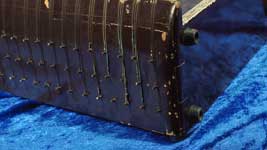
Santur is an instrument indigenous to Kashmir, but nowadays played throughout the North. It is a hammered dulcimer which is struck with light wooden mallets. The number of strings may be as few as 24 or more than 100. Typical sizes tend to be around 80. It has a vibrant tone and has become very popular in the last 20 years.
One must not confuse the Indian santur with the Persian santur. The Indian santur is box-like while the Persian version is much wider.
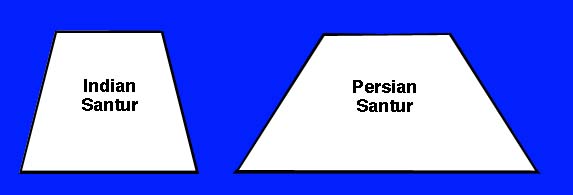
Two playing positions are shown below:
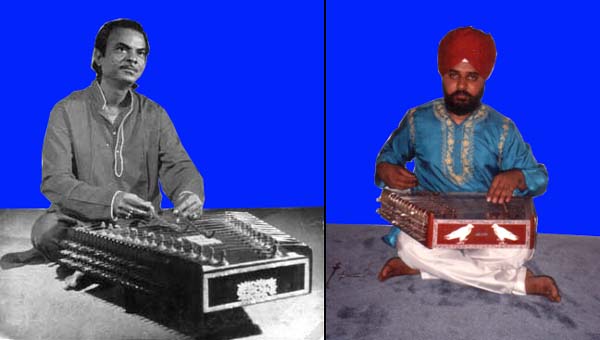
In the first picture the instrument is resting on a small stand. The second picture shows it being placed in the lap. Sometimes it is placed directly on the floor. The small wooden mallets are placed lightly between the index and middle fingers. This is facilitated by two finger sized cut-outs in the mallets. The mallets are shown below:
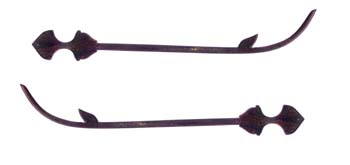
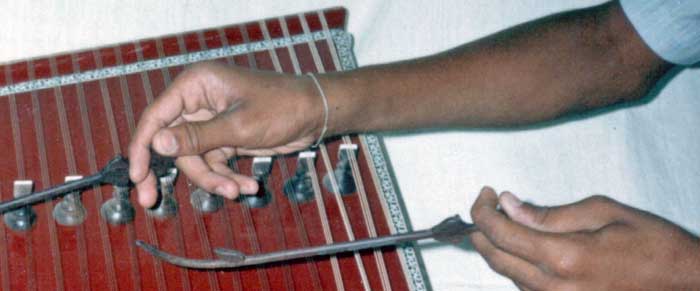
Tuning styles are extremely variable. They are usually tuned to the particular rag and must therefore be retuned for each piece. Furthermore different artists have their own styles of tuning.
The origin of the instrument is clear. The name, structure, and technique point solidly to the Middle East. Yet, there are those who attempt to trace its origins to an ancient Indian harp like instrument known as “Vana Veena”. There is absolutely no evidence for this latter view. If we are to accept this proposition, then how are we to explain its 2000 year disappearance, followed by a miraculous reappearance in a form and usage that, by mere coincidence, is similar to the middle eastern santur? It is clear that attempts to link the santur with this Vedic instrument are a mere reflection of a Hindu cultural bias and are not supportable by serious scholarship.
| Are you interested in a secular approach to teaching Indian music. |
|---|
Indian music is traditional taught in a fashion that is linked to Hindu world views. But there are situations, often in schools, where this approach may not be the best. In such situations The Music of South Asia may be the best resource for you.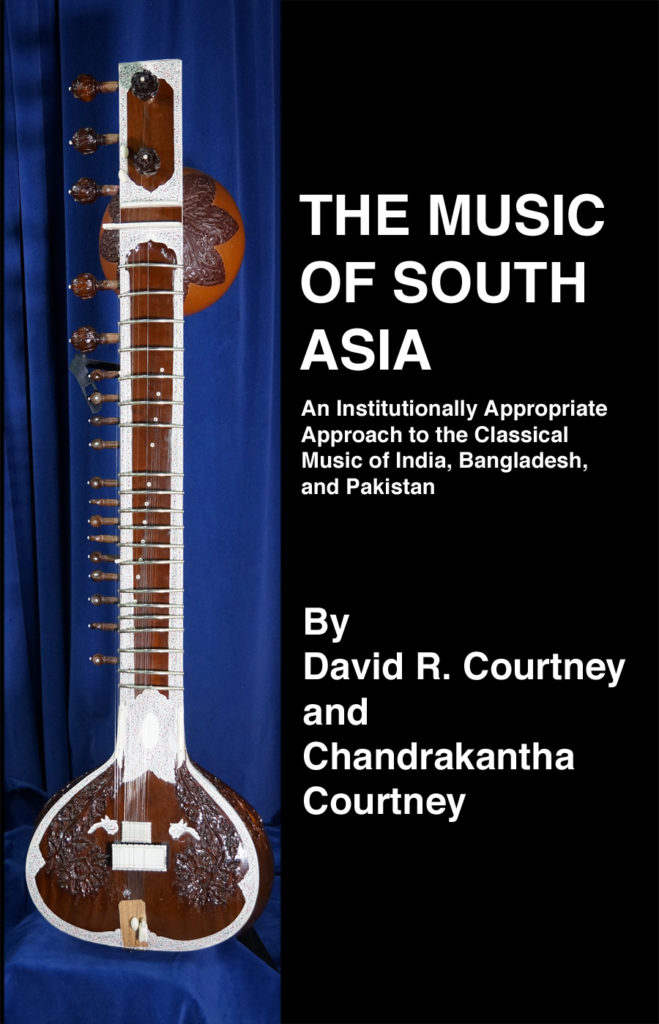 |
Photo Gallery
Click on image
Santur
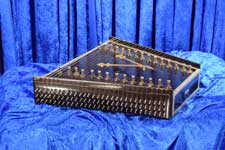
Sound hole
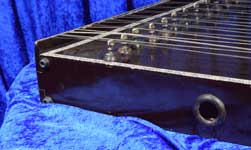
Hammers
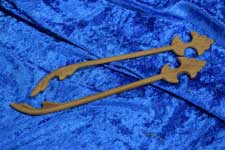
Bridges

Tuning pegs
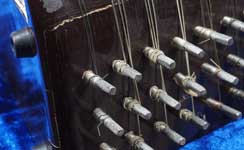
String Attachments
